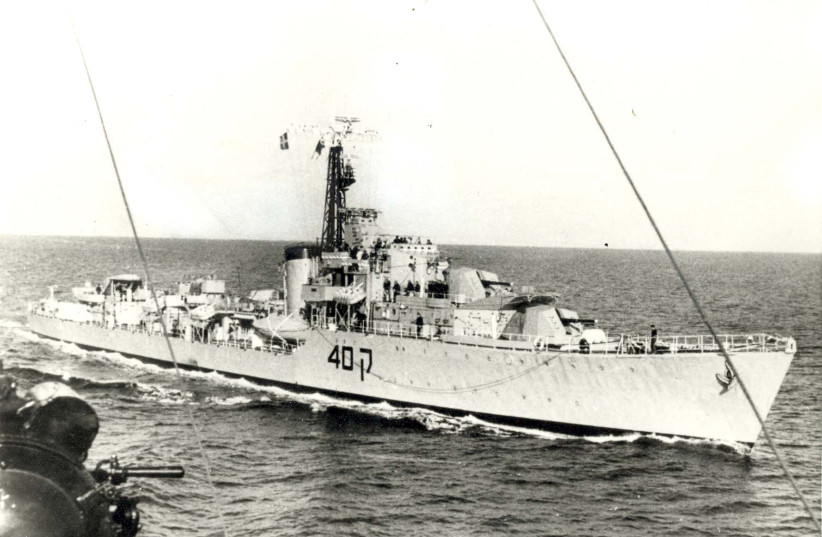The Yom Kippur War is painfully etched in Israel’s collective memory, but not many know that the situation in the naval sector was different. Sea battles were decided in Israel’s favor relatively quickly, thanks to what were, at the time, advanced measures developed by Israel Aircraft Industries.
The Battle of Latakia took place off the Syrian coast right at the outset of the war during the night of 6-7 October, 1973, and was the first sea battle in history in which sea-to-sea missiles were used.
The Israel Navy arrived at the scene of the battle with a complex and integrated weapon system that had been produced by IAI using locally developed Israeli technology.
The ships were equipped with the most advanced military equipment of the time, with the Dagon radar system and advanced weapon systems, which included the Gabriel missile whose strikes paralyzed the enemy. These capabilities, which were used by the Israel Navy in the battle and led to its successful conclusion, were the result of development by IAI, which stood firmly alongside Israel’s defense establishment and even sent its personnel to Israel’s naval bases, to provide real-time assistance with the systems operation and maintenance.
Thanks to the Dagon radar and the Gabriel weapon systems, Israel’s naval forces were able to evade missiles, on the one hand, and on the other – to hit and defeat the Syrian enemy. The battle ended with a decisive Israeli victory: All the Syrian vessels that took part in the battle were sunk – three Syrian missile boats, a torpedo boat, and a minesweeper – with no losses or damage to the Israeli forces.

In addition, this was the first battle in which defensive measures and electronic warfare were used by the Israeli naval forces to disrupt the enemy’s missiles, making them the first force in the world to use such measures in naval warfare.
Israel's navy becomes self-reliant
The Yom Kippur War was the first time that the Israeli Navy relied on Israeli-made equipment, exploiting the direct connection between soldiers and their operational needs, and IAI positioning itself at the forefront of technology with relevant and effective operational concepts adapted to the threats of operations.
Israel Aerospace Industries continues to play a dominant role in meeting the needs of the Israeli Navy to this day: IAI produces the Navy’s main systems, whether for detection, air defense, or attack.
Today, too, the Gabriel missile and IAI’s radars are among the Israel Navy’s main systems, representing the most advanced forefront of technology to provide the best defense for the State of Israel, both at sea and against threats from the sea.
The Gabriel missiles which caused the sinking of the enemy’s boats during the Battle of Latakia are still a part of the naval commando missile boat unit’s insignia. The missiles have been upgraded and are now integrated into Israeli navy ships in their most precise configuration. Capable of ranges of hundreds of kilometers, under changing air and sea conditions, they serve the Israeli Navy in its various missions, including the protection of Israel’s strategic assets.
In addition to its sea-to-sea missiles, Israel Aerospace Industries supplied the Israeli Navy with air-defense systems such as Barak, which provides an integrated solution against airborne threats from different sources and at different ranges, at the same time.
Target detection relies on IAI’s MF-Star (Magen Adir) radar, a system for detecting and classifying air and ground targets to generate a unified situational picture, making it the most advanced of its type in the world. The system is a central component in building a maritime picture and a new and significant layer in Israel’s air defense.
Since its establishment, IAI has been working to ensure the security of the State of Israel. The company’s employees, men and women alike, who laid the foundations for the establishment of the company in its early years and developed a variety of technologies that helped the IDF win Israel’s wars, and those who are currently working on developing groundbreaking technological solutions for the future battlefield, do their work out of a deep sense of mission. They deserve deep gratitude for their work, dedication, and efforts for Israel’s security.
For 70 years, Israel Aerospace Industries has provided the IDF with the most advanced tools, systems, and technologies and we have no doubt that we will still be here, to lead Israel’s defense industry forward, for many years to come.
The writer is CEO of Israel Aerospace Industries (IAI).
